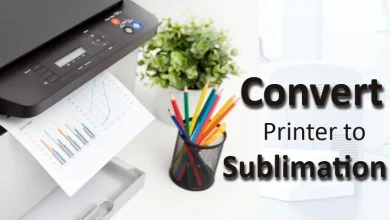
The RasPad 3 Raspberry Pi Tablet Review
It’s possible that the Raspberry Pi RasPad 3 tablet will be of interest to you if you’re looking for a new method to utilize your Raspberry Pi, are interested in programming, desire a handy movie player in a single box, or any of the other cases listed above. In addition to being a pleasant method of learning, it allows you to execute interesting DIY projects and the great majority of time-consuming computer operations with relative ease and efficiency.
It seems that the RasPad is nothing more than a simple aluminum container with a built-in screen when seen from a distance. RasPad cases ought to be more feature-rich than the vast majority of Raspberry Pi cases to accommodate the board’s screen, battery, and all of its ports, all of which are currently unavailable.
It should be noted that the PCB in this particular case was designed expressly for this use and is capable of audio/video transmission as well as battery management. If you tried to build your own Raspberry Pi tablet, you would soon learn that getting everything to work properly while also preventing the whole thing from becoming a tangle of cables is quite difficult to do successfully.
Raspberry Pi RasPad 3 – Design

The Raspberry Pi 4 is designed to be used in conjunction with the RasPad 3, which is a tablet-style enclosure that can be bought separately. Due to the integrated touchscreen and speakers, as well as the battery’s capacity of up to 5 hours, this little gadget is incredibly adaptable and may be used for a broad range of computer-related tasks and activities, such as web browsing and email, without the need for a separate computer.
While offering access to every connector that would normally be accessible on the Raspberry Pi, the RasPad 3 also provides charging and data transfer capabilities via a single USB port. The Raspberry Pi 4 may be linked to a variety of other devices via the use of its four USB 2.0 ports and two USB 3.0 connectors, which are located on the device’s bottom.
On the inside of the RasPad, there are two more USB 3.0 ports for connecting peripherals.
To be clear, this is neither an iPad nor is it a tablet computer running the Android operating system, as some may believe. It has a 10.1-inch display and is wrapped in a robust plastic casing, the tablet is not as thin as you would expect for a tablet in this price range, which is disappointing.
Despite this, it weighs about the same as a conventional tablet, is lightweight, and is small enough to be carried about with you wherever you go. Furthermore, although it does not have the visually pleasingly small bezels of an iPad, it is more than enough for the purposes for which it was designed.
Raspberry Pi RasPad 3 Touch Sensitivity
When it comes to touch sensitivity, it works well, and it behaves in the manner that you would expect from a modern touch-enabled device of this quality and price. The operating system Raspbian proved to be rather straightforward to operate, albeit you may have some difficulties at first with some of the little symbols.
Raspberry Pi RasPad 3 Keyboard
Make use of the on-screen keyboard or a Bluetooth keyboard that is connected to your computer to complete tasks as quickly as possible. It will be a wise investment in your computer to get an external keyboard if you intend to be doing a lot of typing in the future. Alternatively, if you do not want to utilize the Raspberry Pi’s built-in Bluetooth keyboard, you may attach a USB keyboard to one of the device’s USB ports.
Is Raspberry Pi RasPad 3 Similar to iPad?
This is the first and most obvious question that comes to most people’s minds when they hear the phrase “tablet,”. Please understand that this is in no way similar to the iPad. Because of its larger size and shorter battery life, as well as its lower-quality screen, this model is less popular with users than prior models of the device. If your main purpose is to participate in creative endeavors such as electronics design and project development, it is still preferable to an iPad in terms of performance. The “Pi inside” gives you access to functions that would otherwise be unavailable on a regular retail iOS or Android tablet.
Comparison with other similar devices
As a result of the presence of a few other well-established goods on the market, the RasPad will be in direct rivalry with other items. Devices such as the Kano and the Pi-top, which are instances of this kind of technology, are good illustrations of how they may be used in practical situations. A tremendous amount of time and effort has been invested in the creation of tools and training materials for these environments, which are primarily designed for educational purposes alone.
The Pi-top is the most popular portable option, with the Kano coming in a close second in terms of popularity among instructors. SunFounder will need to put in a substantial amount of effort, as well as give its staff and clients the resources and services they need to establish a serious position in this market.



